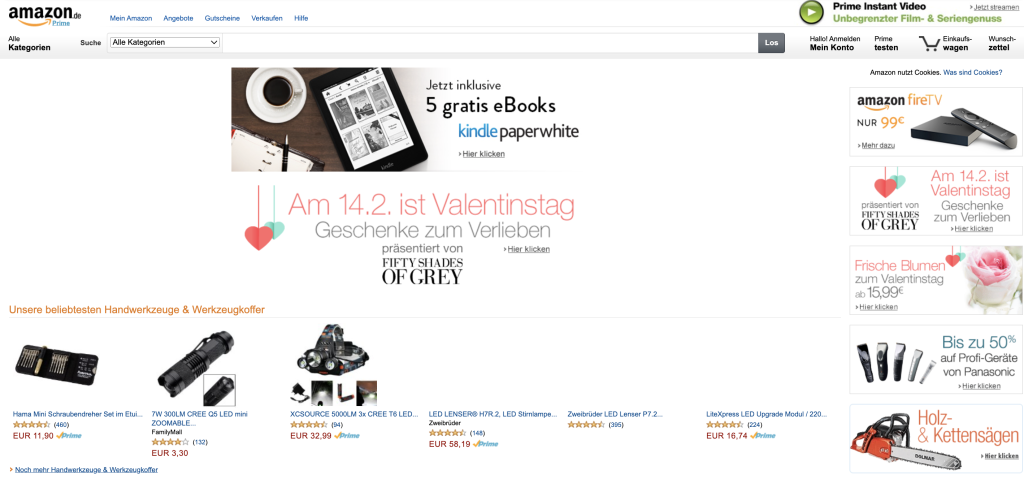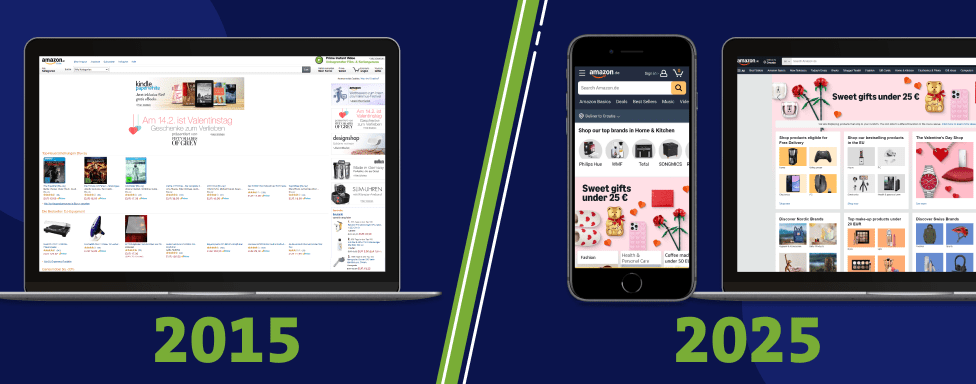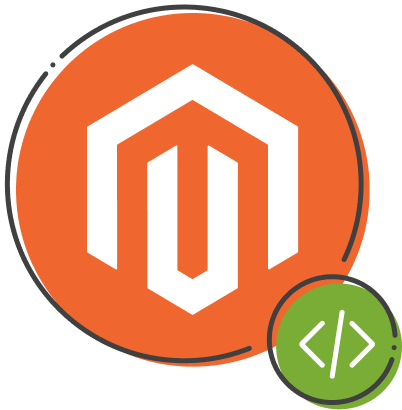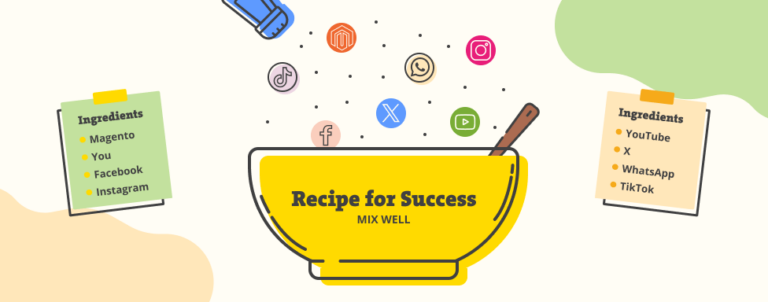If there’s one thing we can say with certainty – eCommerce trends consistently change and evolve. Let’s take a look at the German version of Amazon in February 2015:

It’s great the Wayback Machine can help us take a glimpse into the past, right?
The 2015 version of Amazon.de looks a bit bare nowadays, though, doesn’t it? Let’s make a quick comparison with how it looked on the day of the publication of this blog post, in February 2025.
Feels similar, but it’s quite different, isn’t it? There are quite a few new features – probably the most noticeable one, you can switch the language to English.
The world of eCommerce evolves every year, and we must ensure we stay up to date with trends and ahead of the curve. After all, as a merchant, you don’t want to lag behind your competitors. You want a solution that’s going to make you competitive, as well as attractive to your customers.
However, online stores in 2025 have advanced quite further than their 2015 iterations. Shopping online is becoming more and more intuitive and easier for customers due to a steady stream of new features regularly being developed. Let’s take a look at what those shiny, new features were back in 2015 compared to what we expect an online store to have today.
2015 Was a Decade Ago?
In 2015, online shopping on mobile phones was just becoming all the rage. Sellers and merchants were catching on to the trend and ensuring their stores were responsive for smartphones. According to one study, only 28% of traffic in 2014 was mobile, with the number expected to dramatically rise. Boy, were they right about that.
Quality SEO was always crucial for getting your products in front of your customers. A decade ago, traditional SEO tactics started becoming outdated and predictions were that an increased push toward quality, unique content tailored to your audience would be of significant importance.
Regular promotions and newsletters were just gaining ground at the time, becoming a key tool to building loyal customer bases. “Developing an effective promotional and incentive eCommerce campaign will be another essential factor for e-retailers and even b2b eCommerce stores in 2014,” says Trellis.com in their “The State of eCommerce in 2014” blog. Nowadays, it’s difficult to imagine an online store that doesn’t have a newsletter, isn’t it?
Focus on user experience was always important, but not all trends had caught on a decade ago. Miva.com wrote about the importance of simplifying your checkout, eliminating obstacles to conversion, as well as making it visually as straightforward and understandable as possible. On Trellis.com, they talked about the ease of navigation in the menu, searchability of products on the site, ease of use during checkout, calls-to-action, etc.
These things all still ring true today – but they aren’t quite the selling point anymore, are they? You expect every store to have them. So what features can – or what should we – expect online stores to have today?
2025, One Year After 2015
A mobile-first approach is essential today. In 2015, mobile website traffic was predicted to be just as relevant as desktop traffic, but in 2025, mobile traffic now makes up more than 60% of all website traffic, and more than 70% for eCommerce traffic. The same article states that in 2024, it’s estimated that over 70% of all online sales came from a mobile device, a number that has been increasing year-over-year. Neglecting a responsive, user-friendly mobile experience in 2025 really means setting yourself up for failure – it’s no choice anymore.
A standard description and image product page is often not enough anymore. Advanced, interactive features such AR (Augmented Reality) and VR (Virtual Reality) can make your store stand out in a crowd. For example, for one of our clients in the flooring industry, we implemented the Room Viewer feature, which allows customers to visualize how the flooring they picked looks in the room for which they are buying it. Allowing your customers a 360-degree view of a product, or a preview of how their clothing set might look, will put you a step ahead of the competition.
In today’s world of social media, omnichannel integrations can make you more present and available to potential customers. Through the Meta Commerce Manager, you can connect your business with Facebook and Instagram and offer your catalog directly on those platforms. This broadens your online presence and makes your products incredibly easy to find, allowing visitors on social media platforms to make their purchases directly on those very platforms, rather than forcing them to click their way to your store.
Also, don’t forget to neglect email marketing. It goes without saying that you can tailor your messages to meet the specific interests of your customers by utilizing strategies such as behavior-based emails and abandoned cart reminders. There’s quite a value to be found in email marketing. For example, the average cart abandonment rate is 69.99%, according to Baymard Institute. By nudging those customers back to your store, you can earn some extra profit.
And must it even be said – user-experience must be your top priority at all times. It’s no good to have a functional store. Descriptors for the experience of using your store must be easy-to-use, intuitive, and responsive. That means flexible payment options, clearly understandable navigation, breadcrumbs, ability to register with Google, Facebook, and similar.
In short, any feature that makes using your store easy and offers your customers features they actually need. That doesn’t mean you should load your store with every feature under the sun, but those that are logical and intuitive for the experience you want to offer.
What To Do?
Worry not, because as we’ve said, you don’t need to do everything. You need to do what’s right for your store.
Perhaps that means implementing only features that are standard and necessary. Perhaps that means implementing something more advanced for your more specialized customers. But it’s up to you to figure out the best solution for your store.
But there’s always the option of looking for agencies to help you with that daunting task. Feel free to reach out – we’ll figure out the right solution for you.






